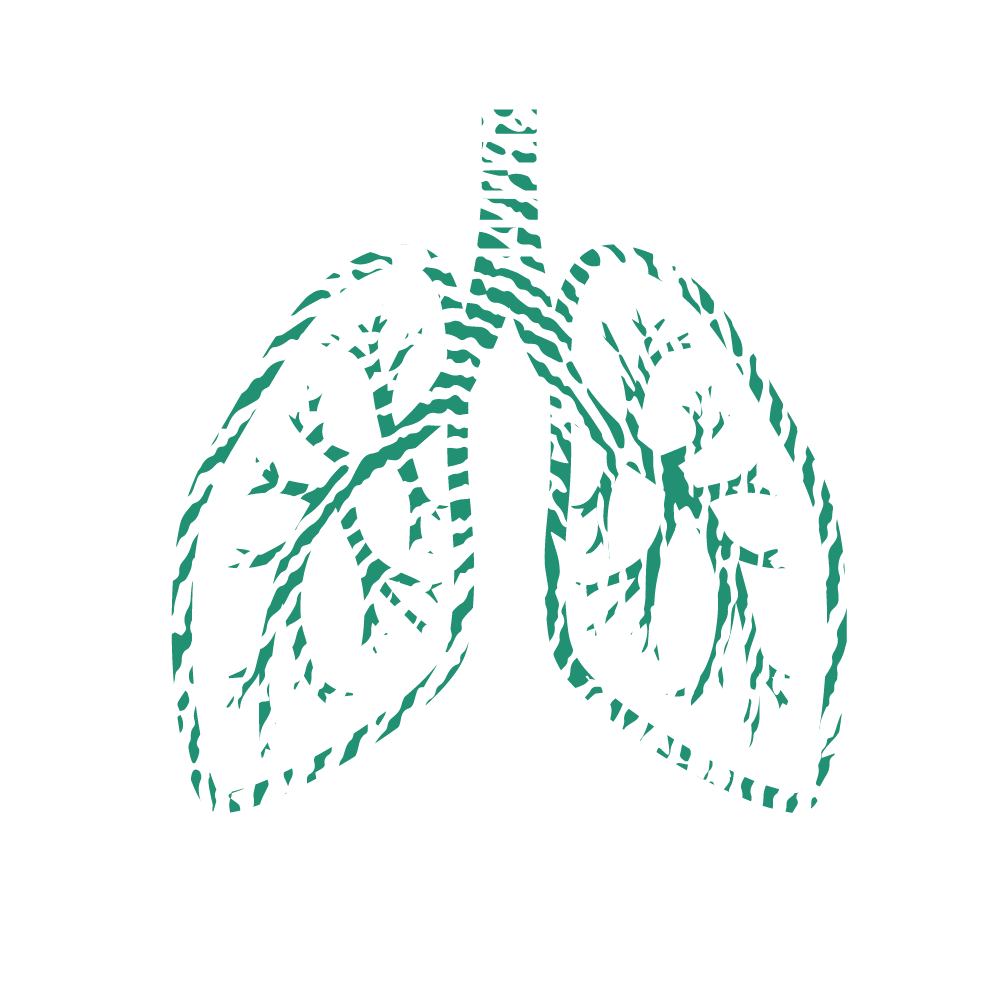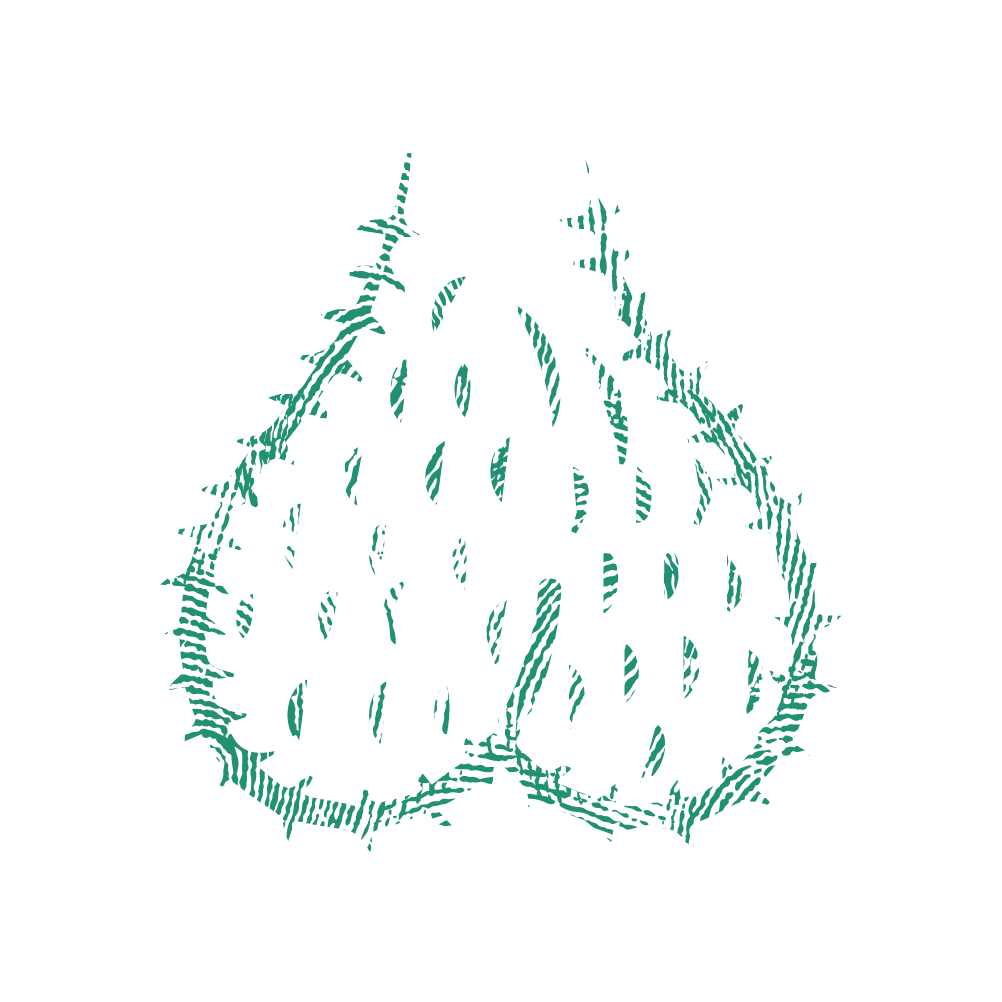Sarah Turner, an expert in photobiomodulation and the co-founder and Head of Science at CeraThrive, the red light therapy system targets the gut-brain axis. Sarah is a scientist through and through, but her interest has oscillated from the mechanical end of the spectrum (through her work in the pharmaceutical industry) to the holistic and alternative end (through the studying she did when she became disillusioned with the pharmaceutical industry).
→ check out Sarah here https://www.linkedin.com/in/sarah-turner-80087355/
→ check out CeraThrive here https://www.cerathrive.com/
Are you wondering how light can help boost your cognition, immune system, and mood? Do you want to know what energy exposures are in your environment and the foods you ingest? Then stay right here and get to know more about why Photobiomodulation (PBM) can help you optimize your health!
_______________________________________________________
Eye Just Want To See the Light
by: Ariel Kamen, BSN, RN
Steffen Wehning, B.Sc., (cand.) M.Sc.
“Light is fundamental,” says Sarah Turner, KYP’s expert in photobiomodulation and co-founder of Serotride, the red light therapy system targeted at the gut-brain axis. Interplay between the digestive and nervous systems occurs in the enteric nervous system with thousands of small ganglia lining the organ walls. Electrical charges within nutrients from the food we consume sends information to our brain for how to process usable energy. Light patterns, both natural and artificial, activate or deactivate molecules depending on its spectral wavelength.
What is the connection between us and rays of light?
The entirety of the human species have evolved and adapted underneath the daily rhythms of sunlight. It is no surprise that our bodies are covered with receptors that respond to sunlight exposure. All of our biochemical mechanisms oscillate in a circadian rhythm, making us seemingly human solar panels. Intrinsically, we have this circadian biology that triggers every metabolic reaction. Sarah Turner believes that our indoor-dominated lives have blinded us of the role sunlight plays in our evolutionary abilities. She says, “No one wakes up on the floor outside. Very few people live their life according to the circadian biological cycle.” Not only do we have artificial light, we now have WiFi and 5G technology. We are surrounded by a spectrum of electromagnetic radiation that has not been here before. It was only a few hundred years ago that we were still doing everything under candlelight.
History of Light
Humans of the earliest forms have evolved under the same sunlight we receive today! Of course, some days the clouds bring in the dreary-gray skies, but the bright side is that ultraviolet radiation of the sunlight can still penetrate our skin and the retina of our eyes – regardless of the color of the sky. Sunlight provides nutrients with the charge they require for optimal processing.
On the other hand, artificial light was first introduced as incandescent lamps during the 1870s by Thomas Edison. It was only a handful of generations back that our folks were cooking meat with fire and reading under the candlelight. LED lights were released to national militaries by Russian inventor, Oleg Losev in 1927. His research was distributed in Soviet, German and British scientific journals, but no practical use was made of the discovery for several decades. Almost 100 years later, we are now addressing the effects LED has on human functioning.
Photobiomodulation
Sarah Turner’s personal discovery of the undeniable connection between the inside and outside environments led her to further pursue higher education in nutrition, neuroscience, stress & health. Her emphasis is conscious light exposure to increase consciousness and heal your brain. Her research dives into the deep science of light as a wave carrier of information for our body (Wang et. al, 2020).
Photobiomodulation (PBM) is the sector of biohacking that uses light to enhance functioning of the inner cells. For example, focused red light exposure to the body at different frequencies (630,850,940,1070nm) has the ability to reverse neurodegenerative damage and indigestion, while focused blue light exposure is used to decrease acne vulgaris (Avci et. al, 2013). The hypothesis of PBM is that brain tissue chromophores are able to absorb photonic (light) energy according to its wavelength and the resulting impact on cellular metabolism and brain physiology. At the crux of it’s benefits, PBM produces anti-aging effects, promotes fertility, and reduces inflammation (Cardoso, Gonzalez-Lima & Gomes, 2021).
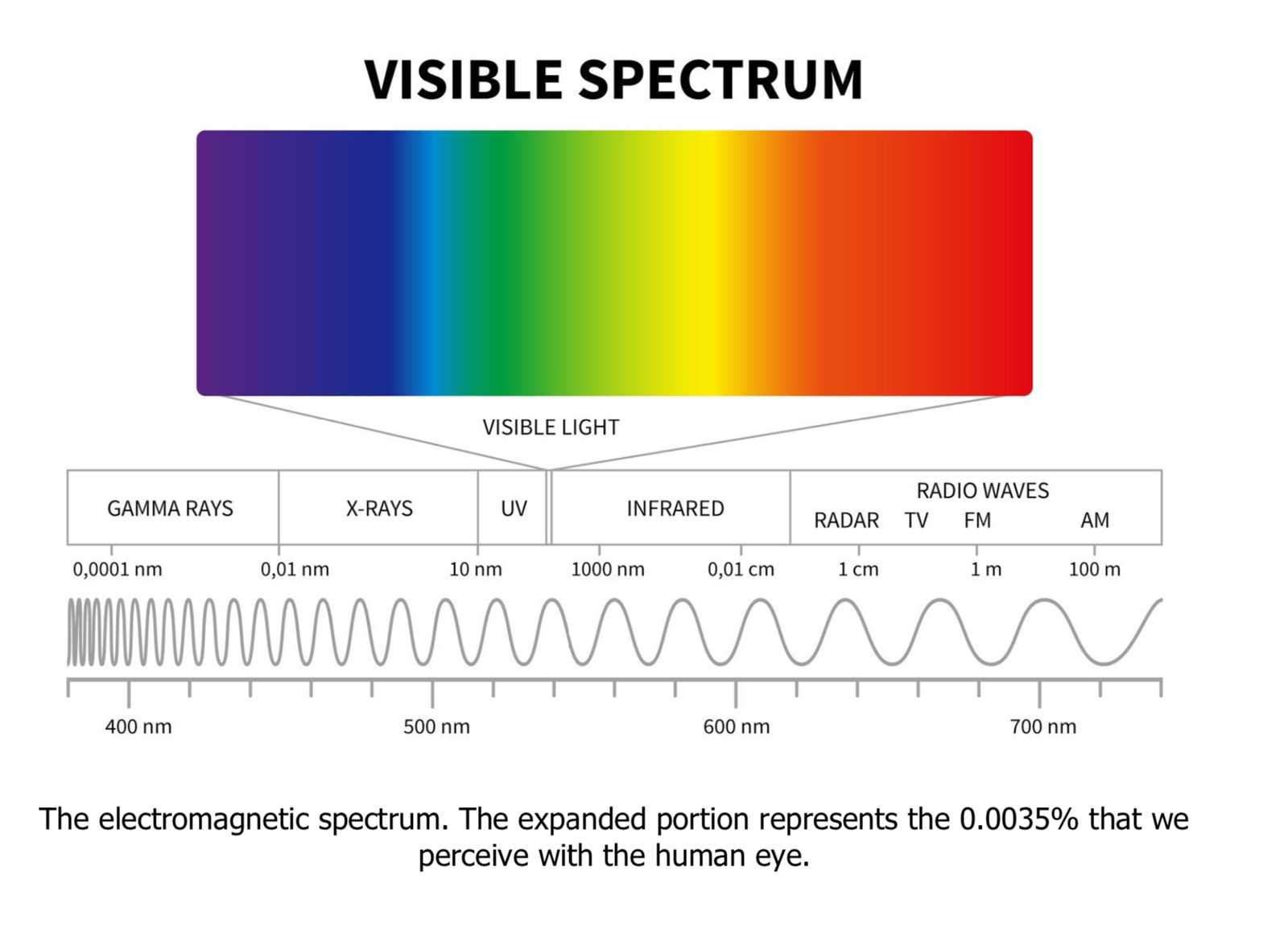
Light as a Wave
To consciously expose ourselves to the photons of the atmosphere, we must have knowledge about different waveforms that each exhibit their own biophysical powers. Ultraviolet (UV), visible light, and infrared are waveforms produced by the natural sunlight (Urban et.al, 2016). All other waveforms (gamma rays, X-rays, radio waves) are technological advances used frequently in media and healthcare.
What effects do external sources of light have on us?
Exposure to artificial light after sundown is not a bad thing per se – it is mainly the source of light that is the issue. As mentioned earlier, candlelight was the normal light source we have been using for many years before. The thing about candlelight is that it contains a “natural” spectrum of red light with an intensity and wavelength that has not been as disruptive to our circadian biology as the blue light from artificial light is.
Sarah’s emphasis is that conscious spectral light exposure can be used to increase consciousness and heal our brains. Her research dives into the deep science of light as a wave carrier. Focused red light exposure to the body at different frequencies (630, 850, 940, and 1070 nm) has the ability to reverse neurodegenerative damage and indigestion. Also blue light is not “bad” in general: Focused blue light exposure is used to decrease acne vulgaris.
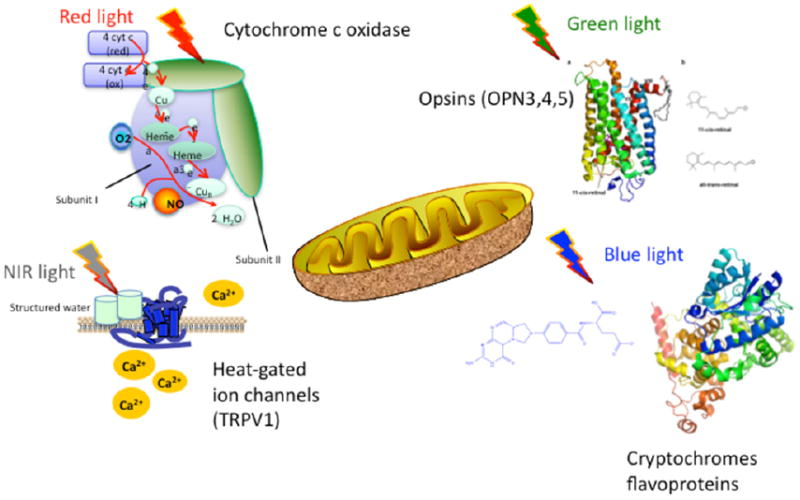
Chromophores in PBM. Cytochrome-C-oxidase in the respiratory chain absorbs mainly red (and NIR) light by heme and copper; Heat-gated TRP ion channels absorb NIR (and blue light) via structured water; opsins absorb mainly blue/green light via cis-retinal; flavoproteins and cryptochromes absorb mainly blue light via pterin.
Figure 1 – taken from Hamblin (2017)
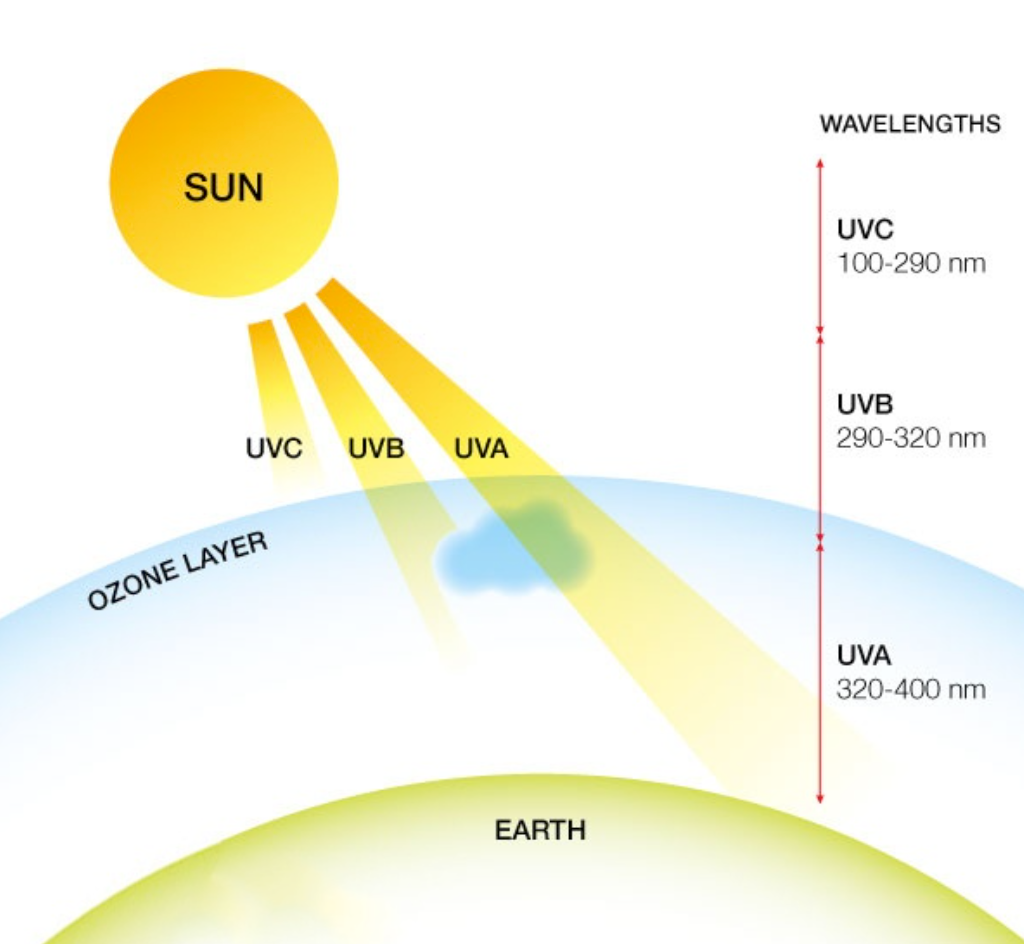
Physiology of PBM
When the sunlight penetrates the skin at different angles in the sky, it is able to vasodilate the vessels, synthesize vitamin D, promote digestion, and engage all parts of the body in prime functioning (Christakos, 2010). Another route to intake light is through the eyes, which makes blue blocking glasses sound more rational (Lawrenson, Hull &Downie, 2017). Light is capable of penetrating our tissue enough to reach the depths of our tissue. It is important to expose our skin and eyes to the sunlight without putting extraneous stress on our body, which manifests as sunburn or eye strain. Conscious light exposure allows biohackers to achieve a balance between over and under sun exposure
.
Nutrition in PBM
How and what you eat have electromagnetic effects on your field (Smith, 2015). Eating eggs, meat, fish and nuts before sunlight exposure requires different processing and utilization than eating vegetables, fruits, and grains. Sarah’s time studying integrative nutrition allowed her to make better sense of photobiomodulation and the food she stocks in her fridge.
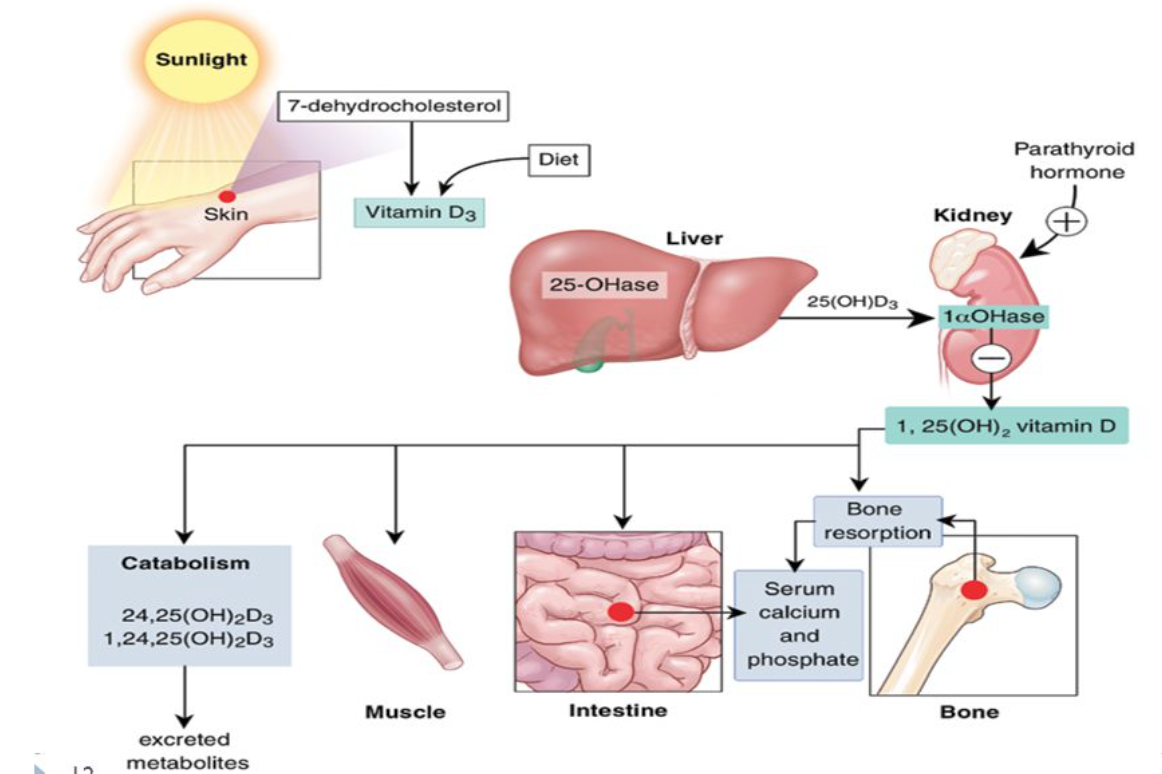
Neural connections between the gut and brain send and receive information about the food we ingest (De Ponti, 2002).
Electrolytes (Na+, K+, Mg+, Cl-, Ca++, PO4-) within the food are given their electrical charge when activated by light. Without the light, digestion and energy production is weaker Firsov, Tokonami & Bonny, 2012). To continue evolving under our sun we must expose ourselves to it. No meal-plan will ever make sense to people who rarely go outside.
A nutritional controversy that persists among society is consumption of cholesterol.
Cholesterol is a molecule that dominates the lining of cellular membranes and nerves. You can imagine cholesterol being like a raft, which serves to carry molecules across the membrane and neurotransmitters down the axon terminal. With that being said, cholesterol is now being studied as a metabolically relevant molecule.
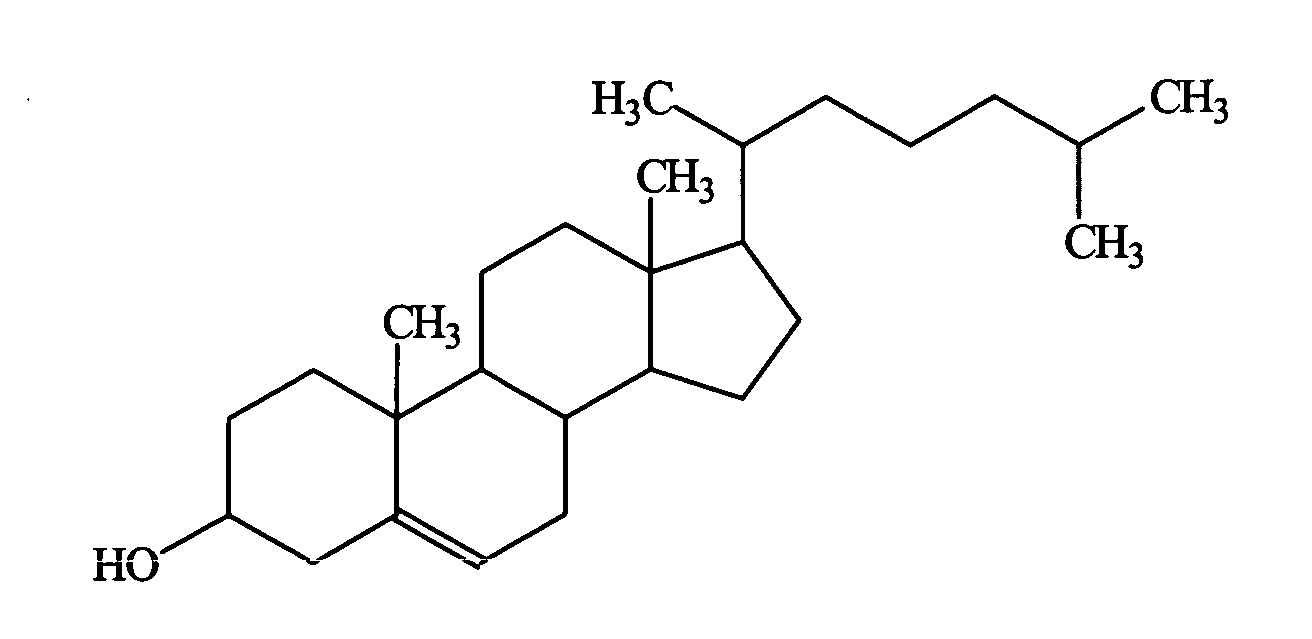
Cholesterol is the chemical precursor to pregnenolone, which is the precursor to human sex molecules (Miller & Auchus, 2011). Among the various densities of cholesterol, low density lipoprotein (LDL) reacts with UVB light from the sun to synthesize Vitamin D for our immunity (Ponda et. al, 2017). Foods that are high in LDL cholesterol include but are not limited to; eggs, cold water fish, and nuts. Consuming these foods have maximal benefits on human physiology when combined with the ultraviolet light of the sun.
Light Patterns Throughout the Day
Sunrise, sunshine, sunset, repeat. Each day, this phenomenon is so predictable that biohackers like Sarah Turner have learned to act on the science. The best place to start is at the sunrise. Sleep is going to be of the utmost importance in order to catch the sunrise in your eyes. The acute angles of the sun in the early morning emit red and orange light that penetrate into the deep tissue and jumpstart metabolism for the day. As the sun rises towards midday, yellow, green, and blue light become visible. Blue, indigo, and violet light is present at sunset. By understanding the circadian rhythm of each day per time of year, you can become more in sync with your external environment.
Want to take action into photobiomodulation? Keep scrolling…
Actionable Steps
- Exposure to three doses of sunlight each day
- Sunrise
- Sunshine
- Sunset
- Minimize artificial light exposure after sunset
- Keeping your phone in airplane mode overnight, for the first 15, then 30 min, then even 60min of the day
- limit your exposure to electromagnetic frequencies (EMFs) like Bluetooth, WiFi, microwaves, etc., by…
- no not using a microwave (constantly)
- turning off your WiFi overnight
- using LAN instead of WiFi whenever possible
- limiting your time using Bluetooth (turn it off on your phone or laptop)
- not using wireless earphones, use cable ones whenever possible
- turning off your GPS if not needed
- use Near Infrared light (NIR) for stimulation of healing processes and boosting mitochondria function, (Muscle, joint, fascia) recovery, and improving brain energy metabolism
- Increase your intake of foods high in cholesterol
- Eggs
- Cold water fish (salmon, tuna, blue fish)
- Nuts
- Meat
- Dairy (heavy cream over soy milk)
- Get your own pair of blue blocking glasses using code ANDRES10 https://raoptics.com/collections/glasses
Resources:
Avci, P., Gupta, A., Sadasivam, M., Vecchio, D., Pam, Z., Pam, N., & Hamblin, M. R. (2013). Low-level laser (light) therapy (LLLT) in skin: stimulating, healing, restoring. Seminars in cutaneous medicine and surgery, 32(1), 41–52.
Cardoso, F., Gonzalez-Lima, F., & Gomes da Silva, S. (2021). Photobiomodulation for the aging brain. Ageing research reviews, 70, 101415. https://doi.org/10.1016/j.arr.2021.101415
Christakos, S., Ajibade, D. V., Dhawan, P., Fechner, A. J., & Mady, L. J. (2010). Vitamin D: metabolism. Endocrinology and metabolism clinics of North America, 39(2), 243–253. https://doi.org/10.1016/j.ecl.2010.02.002
De Ponti F. (2002). Physiopathology of the enteric nervous system: recent advances and clinical implications]. Recenti progressi in medicina, 93(1), 40–44.
Firsov, D., Tokonami, N., & Bonny, O. (2012). Role of the renal circadian timing system in maintaining water and electrolytes homeostasis. Molecular and cellular endocrinology, 349(1), 51–55. https://doi.org/10.1016/j.mce.2011.06.037
Lawrenson, J. G., Hull, C. C., & Downie, L. E. (2017). The effect of blue-light blocking spectacle lenses on visual performance, macular health and the sleep-wake cycle: a systematic review of the literature. Ophthalmic & physiological optics : the journal of the British College of Ophthalmic Opticians (Optometrists), 37(6), 644–654. https://doi.org/10.1111/opo.12406
Miller, W. L., & Auchus, R. J. (2011). The molecular biology, biochemistry, and physiology of human steroidogenesis and its disorders. Endocrine reviews, 32(1), 81–151. https://doi.org/10.1210/er.2010-0013
Ponda, M. P., Liang, Y., Kim, J., Hutt, R., Dowd, K., Gilleaudeau, P., Sullivan-Whalen, M. M., Rodrick, T., Kim, D. J., Barash, I., Lowes, M. A., & Breslow, J. L. (2017). A randomized clinical trial in vitamin D-deficient adults comparing replenishment with oral vitamin D3 with narrow-band UV type B light: effects on cholesterol and the transcriptional profiles of skin and blood. The American journal of clinical nutrition, 105(5), 1230–1238. https://doi.org/10.3945/ajcn.116.150367
Schade, D. S., Shey, L., & Eaton, R. P. (2020). Cholesterol Review: A Metabolically Important Molecule. Endocrine practice : official journal of the American College of Endocrinology and the American Association of Clinical Endocrinologists, 26(12), 1514–1523. https://doi.org/10.4158/EP-2020-0347
Urban L, Charles F, de Miranda MRA, Aarrouf J. (2016). Understanding the physiological effects of UV-C light and exploiting its agronomic potential before and after harvest. Plant Physiol Biochem. 2016 Aug;105:1-11. doi: 10.1016/j.plaphy.2016.04.004. Epub 2016 Apr 4. PMID: 27064192.
Wang, L., Mao, X., Wang, A., Wang, Y., Gao, Z., Li, S., & Yan, L. (2020). Scheme of coherent optical chaos communication. Optics letters, 45(17), 4762–4765. https://doi.org/10.1364/OL.390846
Zheludev, N. The life and times of the LED — a 100-year history. Nature Photon 1, 189–192 (2007). https://doi.org/10.1038/nphoton.2007.34





